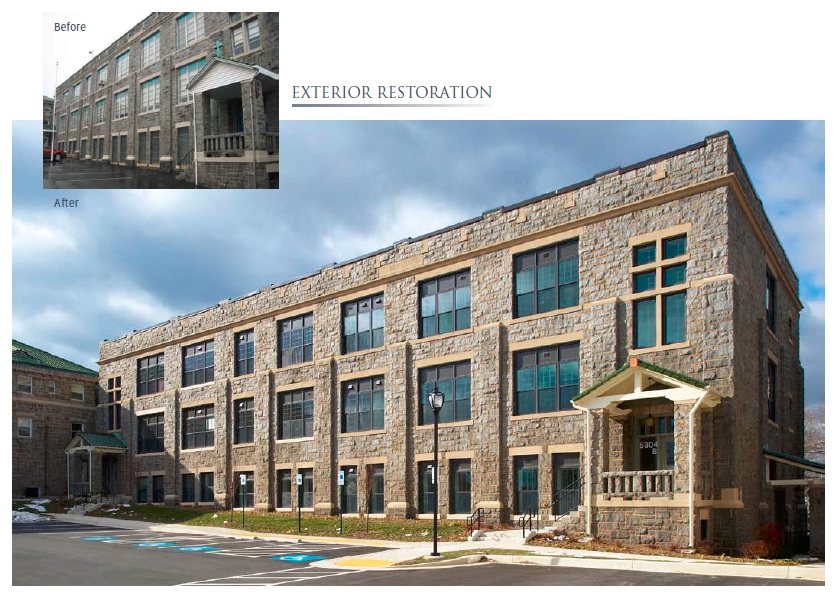
Over the past few months, we have shared a few updates on our efforts to preserve Hebrew Orphan Asylum– an 1876 Victorian Romanesque landmark in the Greater Rosemont neighborhood of West Baltimore and the oldest Jewish orphanage building in the United States. We developed a partnership with the Coppin Heights CDC and Coppin State University and received grant support from both Preservation Maryland and the National Trust for Historic Preservation. Now you have a chance to declare that this place matters and support the preservation of the Hebrew Orphan Asylum.
In partnership with Coppin State University, the building’s owner, and the Jewish Museum of Maryland we have submitted the Hebrew Orphan Asylum to the “This Place Matters Community Challenge” a national competition sponsored by the National Trust for Historic Preservation. For the next two weeks, people across the country are voting online to support historic places in their communities and the place with the most votes wins $25,000.
Please help us preserve the Hebrew Orphan Asylum by voting online right now. In less than a minute you can help us save over 130 years of Baltimore history. You can only vote one time, so please share this request with friends, family and neighbors who can help us all save this important Baltimore building. The contest ends on September 15 so we only have two weeks to get the word out, but we are still keeping our fingers crossed. Thank you, as always, for your interest and support as we continue our work to save and restore this historic Baltimore place.




